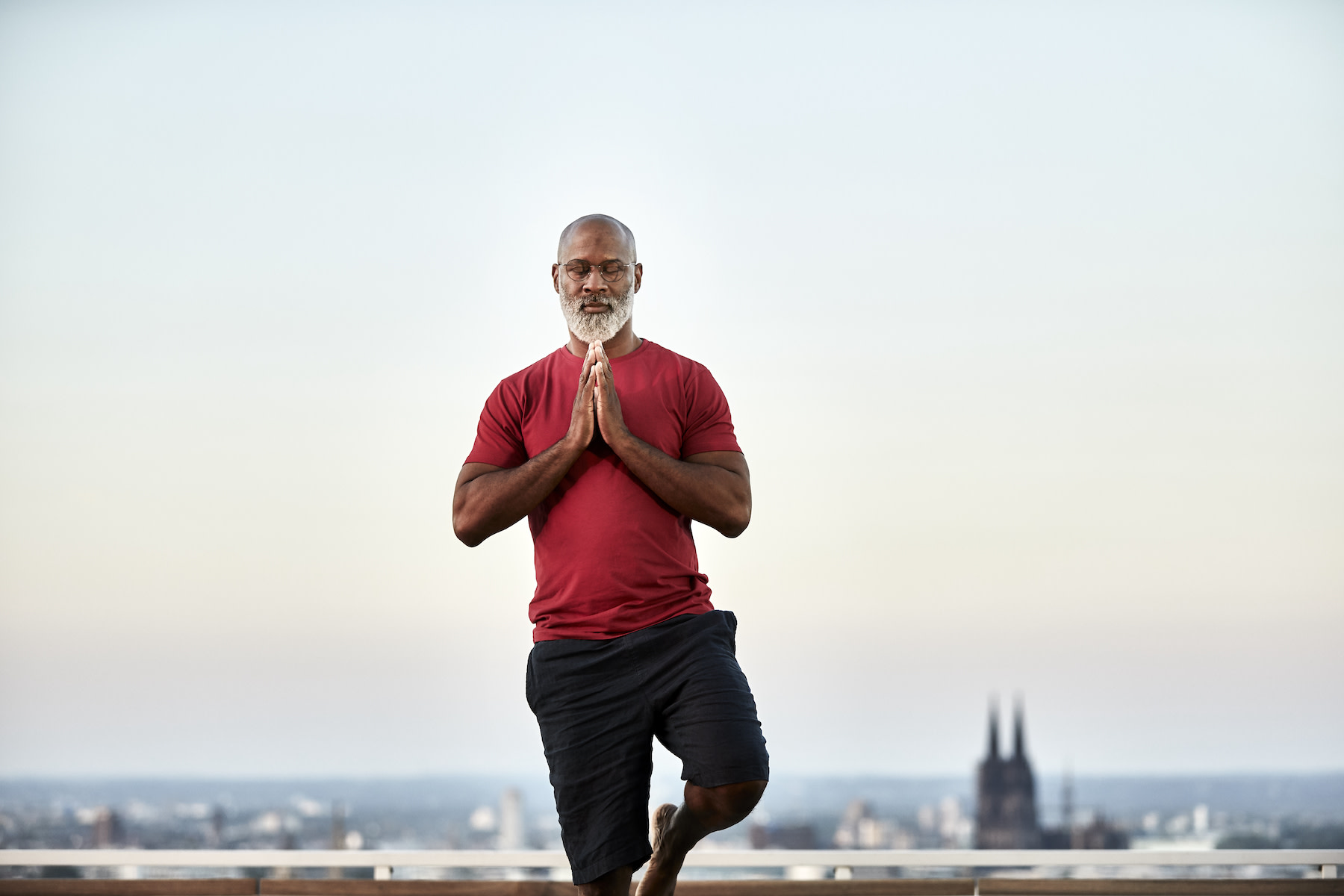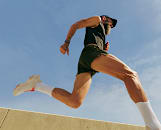
MoMo Productions/DigitalVision via Getty Images
3 Ways You Can Improve Your Balance (and Why You Should)
A little bit of practice can go a long way.
By Karen Asp•
Work-life balance is one thing. But physical balance is another. The ability to hold yourself upright is critical for your fitness endeavors—and your everyday activities. Here, we break down the importance of building better balance and how to do just that, regardless of your preferred modality.
Discover more ways to reach your goals with Peloton
The Importance of Balance
You’re likely familiar with the concept of balance in your yoga or stretching class. (Think: tree pose or a standing quad stretch.) These instances of standing on one leg are, of course, some of the most obvious examples of balance. But it actually has a much wider definition. “Balance is the ability to maintain an upright and stable standing position, not only on one foot but also in a bipedal (upright walking) position,” says Peloton instructor Becs Gentry. “It’s a total body ‘move’ with dominant muscle groups assisting you in your core and lower body.”
The Benefits of Balance
You may not realize it, but balance plays a role in almost every fitness modality. “When you move forward—think walking, jogging, or running—you move through space by making contact with the ground one leg at a time,” Becs says. “The stronger your balance, the greater your ability to move forward for longer without possible pain or injury.” Here, we break down a few other ways you’ll benefit from improving your balance.
You’ll Strengthen Your Yoga Practice
Let’s face it: Toppling over in yoga class isn’t fun. Warrior 3, half moon, and dancer’s pose are all one-legged postures that challenge your stability. Good balance can help you stay upright in these poses.
It Can Help Your Running Performance
Your balance may not come to mind when you head out for a jog. However, running is actually a single-leg activity since your feet are never on the ground at the same time. Without balance and stability, you may struggle to train effectively and efficiently.
You Can Cycle with Better Posture
Love to cycle? With a decent amount of balance, you’ll be able to maintain good posture throughout your upper body, Becs says. (Having this type of stability in your core and legs will also help you climb out of the saddle.)
You Can Maintain Your Form While Strength Training
Lifting heavy weights (or even just your own body weight) requires more than just muscular strength. You also need balance. "With or without dumbbells, there’s always going to be a transfer of weight to a specific area, and you have to find a way not to topple over or take it too far,” says Peloton instructor Mariana Fernández. For example, in a single-leg deadlift, you’ll need balance in order to maintain your form—and prevent wobbling.
You Can Avoid Getting Injured
You may not realize it, but you also rely on your balance outside of your workouts. You need stability to safely climb stairs, carry shopping bags, and even tie your shoes. “Having good balance means you can complete your daily activities without pain,” Mariana says.
Having good balance is also vital to preventing injuries and falls. A 2022 meta-analysis published in the Journal of Physiotherapy found completing balance training exercises decreased the risk of ankle injuries in soccer players. Additionally, a 2020 review published in the International Journal of Behavioral Nutrition and Physical Activity noted that balance and functional exercises reduced falls among participants by over 40 percent, compared to the control group.

Westend61/Westend61 via Getty Images
How to Improve Your Balance
Balance isn’t something to take for granted, as it can decrease as you age, Becs says. It’s not just a concern for older adults. A 2018 study published in PLOS ONE found that the prevalence of falls begins to increase around middle age, particularly in women. Fortunately, though, you can maintain—or even improve—that balance, no matter how old you are. Here’s how to improve balance at any age.
1. Practice Daily Balance Drills
Consider integrating balance drills into everyday activities. For example, you may stand on one foot while waiting in line or brushing your teeth. “Single-leg standing poses are great because you can work on getting that trifecta (ball mound of the big toe, pinkie edge, and front of the heel of the foot) and shift your weight between those three points,” Becs says. Want to really challenge yourself? Try putting your shoe on while standing on the opposite leg. (Bonus points if you can tie the shoe in this position.)
2. Add Balance Exercises Into Your Exercise Routine
Integrate elements of balance into your regular workouts. For example, you can do isometric movements, such as single-leg deadlifts or single-leg squats, on your lower body days. Practice upper body exercises, such as bicep curls or shoulder presses, while standing on one leg to challenge your core stability. Unilateral work, such as alternating forward lunges, can also bolster your balance.

Peloton App
Access thousands of classes with no equipment needed.
3. Keep It Consistent
No matter when or how you do it, keep your balance exercises playful, like a toddler learning to walk. “They’ll fall over and over, and most of the time they’ll laugh, but they’re also not beating themselves up,” Mariana says. And like many other aspects of fitness, practicing consistently is more important than being perfect from the get-go. Focus on incorporating these exercises into your everyday life.
Related Articles
What Are the Best Exercises to Improve Balance for Seniors?
The best balance exercises for seniors may include:
Marching in place
Standing on one foot and slowly shifting to stand on the other foot
Standing leg raises
Calf raises
How to Test Your Balance
Unsure of where you stand with your balance? (No pun intended.) To test it, time how long you can stand on one leg without falling or leaning on something for support. Aim to hold this position for at least 10 seconds. A 2022 study published by the British Journal of Sports Medicine found that participants who stood on one leg for at least 10 seconds had a lower risk of mortality than those who couldn’t complete the test.
Remember: Improving your balance won’t happen overnight. To see results, you’ll need to do these types of exercises consistently—and be OK with falling down a bit. “My balance is rarely perfect, and even if I find balance, the second I celebrate it, I’ll probably topple out of it,” Mariana explains. Yet that doesn’t stop her from trying—again and again. It is, after all, a balancing act, and the more you practice it, the better you’ll get.
This content is for informational and educational purposes only and does not constitute individualized advice. It is not intended to replace professional medical evaluation, diagnosis, or treatment. Seek the advice of your physician for questions you may have regarding your health or a medical condition. If you are having a medical emergency, call your physician or 911 immediately.
Level up your inbox.
Subscribe for a weekly dose of fitness, plus the latest promos, launches, and events.
By providing your email address, you agree to receive marketing communications from Peloton.
For more about how we use your information, see our Privacy Policy.










